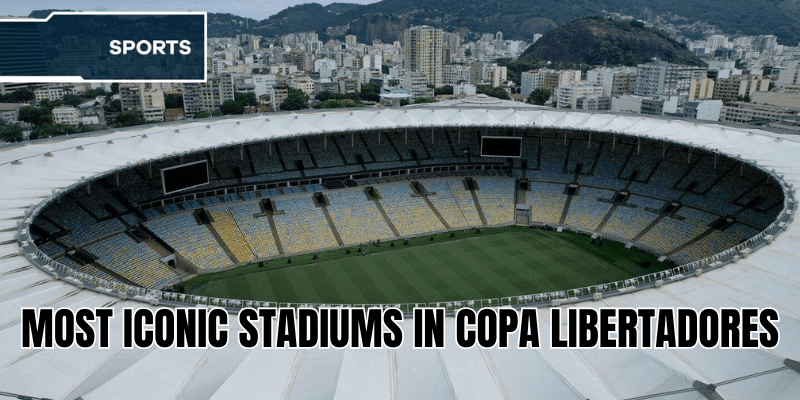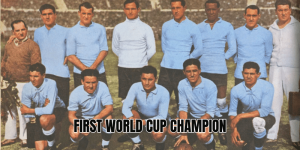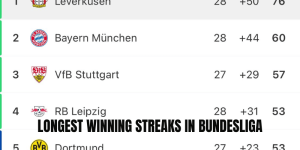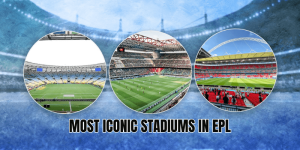In the electric night air of South America, where football is more religion than sport, the most iconic stadiums in Copa Libertadores need no introduction. These grounds have witnessed blood-curdling comebacks, historic goals, broken hearts and made legends immortal. For fans chasing not just stats but the soul of the competition, AnnuGoal invites you on a pilgrimage through terraces and floodlights — through temples where Libertadores history was written.
Some of these are colossal, others intimate and fearsome — but all bear stories that echo with every chant, whistle, and roar.
Why Some Stadiums Become Libertadores Icons
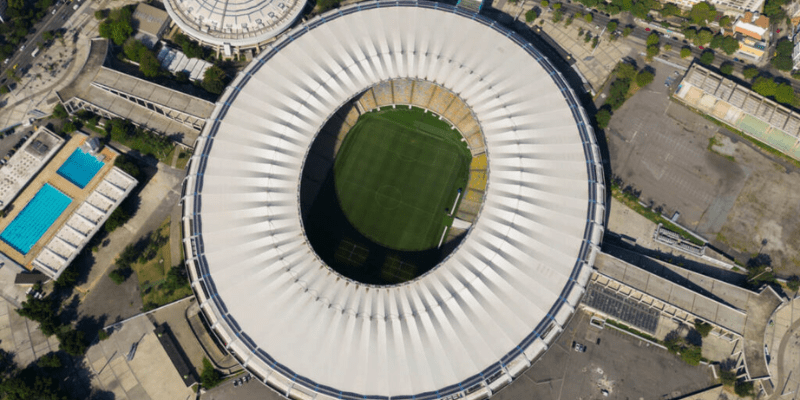
Not every stadium that hosts a Libertadores match becomes legendary. What separates the unforgettable from the routine?
- Moments, not capacity: A dramatic last-minute winner or a titanic final can immortalize even a mid-tier ground.
- Atmosphere & acoustics: Stadiums where fans feel close to the pitch, where the walls reverberate, turn every match into a battle.
- Altitude or environment: Venues with brutal altitude, heat, wind, or sheer difficulty become dreaded across the continent.
- Historic finals & multiple editions: Repeated use in finals or semifinals, or hosting epic continental ties, cements status.
- Cultural identity: In cities where a stadium is woven into the identity of the club and its people, it transcends mere infrastructure.
With those criteria in mind, below is a curated list of the most iconic stadiums in Copa Libertadores — those that have earned mythic status.
Temples of Libertadores Drama

Estadio Monumental Antonio Vespucio Liberti (El Monumental) — Buenos Aires, Argentina
The home of River Plate, “El Monumental” is arguably the most storied stadium in Libertadores lore. With a capacity exceeding 80,000 after renovations, it’s hosted countless crucial semifinal and final clashes.
Its terraces have seen icons like Enzo Francescoli, Ariel Ortega, and more recently Pity Martínez write their names into legend. A River vs Boca Libertadores showdown here is as much about the stadium as the teams.
In one recent twist of fate, River was forced to play a Libertadores match behind closed doors due to sanctions — a reminder of how intensely connected this stadium is to every fan’s heart.
La Bombonera (Estadio Alberto J. Armando) — Buenos Aires, Argentina
Boca Juniors’ fortress, known for its “cauldron effect.” The steep stands, the proximity to the pitch, the undulating walls — all contribute to an oppressive atmosphere for visiting teams.
La Bombonera has hosted multiple Libertadores finals and knockout ties. Its reputation as a fortress is born not.
Maracanã (Estádio Jornalista Mário Filho) — Rio de Janeiro, Brazil
If prestige were a stadium, it would be the Maracanã. The site of World Cup finals, Olympic events, and countless continental showdowns, it is almost synonymous with Brazilian football.
Flamengo and Fluminense have played Libertadores nights here that attract global audiences — it is massive, grand, and capable of swallowing teams in teeming passion.
Estadio Centenario — Montevideo, Uruguay
The ground that hosted the first World Cup final in 1930, Centenario is more a monument than a stadium. It has hosted Libertadores matches, finals, and is protected by football heritage.
While not always the modern spectacle in terms of amenities, its aura is unparalleled in Uruguay and beyond.
Estadio Monumental U (“Monumental de Lima”) — Lima, Peru
Inaugurated in 2000, this is the largest stadium in Peru, with a capacity above 80,000. It was chosen to host the 2019 single-match Libertadores final between River Plate and Flamengo.
Its size and modern structure make it a fitting host for high-stakes continental games, and it has become a must-visit in Libertadores itineraries.
Estadio Hernando Siles — La Paz, Boli. But for local giants like Bolívar and The Strongest, it is a home advantage written in the elements.
Estadio Atanasio Girardot — Medellín, Colombia
The home of Atlético Nacional, it has hosted Libertadores semifinals and finals. The Colombian passion combined with the stadium’s partial shell structure fuels echoing crowds.
Given Colombia’s emergence as a continental power, Atanasio Girardot often plays host to key continental battles.
Estadio Beira-Rio — Porto Alegre, Brazil
Internacional’s La Rioja in Brazil. Beira-Rio has played host to Libertadores knockout matches and finals.
With renovation ahead of the 2014 World Cup, it gained modern touches while keeping its red, passionate identity. In Brazil’s continental runs, Beira-Rio remains a fortress.
Estadio Olímpico Atahualpa / Estadio Rodrigo Paz Delgado — Quito, Ecuador
Quito’s high altitude gives the Ecuadorian stadiums their edge. Rodrigo Paz Delgado (home of LDU Quito) hosted the Libertadores final in 2008.
While Atahualpa has a storied past, Rodrigo Paz is the newer stage for continental glory across Ecuador — both demanding respect.
Estadio Campeón del Siglo — Montevideo, Uruguay
A more modern venue, home to Peñarol, inaugurated in 2016. It was built with continental ambition in mind, meeting CONMEBOL standards and aiming for Libertadores prestige.
While young relative to its counterparts, it is already part of Libertadores cycles and will only grow more symbolic with time.
Honors In Atmosphere: What Makes These Stadiums Legendary
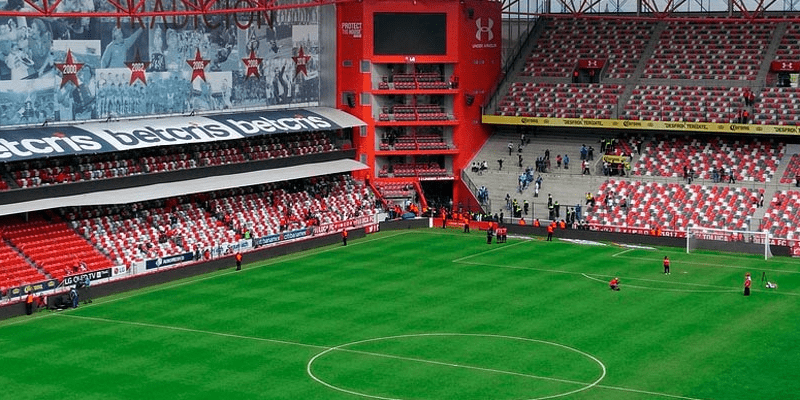
To underscore why these venues are beloved, here is a distillation of their defining features:
| Stadium | Distinctive Strengths |
| El Monumental (Buenos Aires) | Massive capacity, historical finals, diaspora of River fans |
| La Bombonera | Crushing intimacy, acoustics, electric pressure |
| Maracanã | Global prestige, epic matches, media spotlight |
| Centenario | Heritage, World Cup legacy, national symbolism |
| Monumental U | Modern, capacity for major finals, Lima’s flagship |
| Hernando Siles | Altitude, physiological challenge, home advantage |
| Atanasio Girardot | Colombian passion, classic aesthetics |
| Beira-Rio | Renovated, cozy in Brazil’s southern heartland |
| Rodrigo Paz Delgado | Ecuadorian highland advantage, recent finals pedigree |
| Campeón del Siglo | Modern ambition, rising Uruguayan force |
These stadiums aren’t just concrete and seats. They are pressure cookers of nerves, shrine to legends, and battlegrounds where continental dreams are realized or shattered.
Tips For Visiting (And Savoring) Libertadores Stadiums
If you ever chase football across South America, make these notes:
- Check fixture type: Finals or knockout matches amplify the experience exponentially.
- Travel for day-night swings: Many stadiums sit in dramatic geographies (e.g. Quito, La Paz) — plan for thick air or cold evenings.
- Ticket logistics: Libertadores matches often see a mix of local priority, away quotas, and security protocols—book early.
- Fan culture immersion: Pre-match “banderazos,” marches, skirmishes, street chants — arrive early to feel the build-up.
- Respect regulations: Some grounds strictly enforce bans on flares, banners, or away fan segregation—stay informed.
Visiting all ten is a lifetime’s project, but each adds a chapter to your continental story.
Conclusion
In this article, the most iconic stadiums in Copa Libertadores become more than bricks and grass — they become central characters in the drama of South American football. And if you get the chance — see a Libertadores knockout at one — you’ll understand why these names echo forever.
Want a deep dive on one of these stadiums, or a guide to upcoming Libertadores venues for 2025? Let AnnuGoal know — we’ll bring you closer to the heart of every ground.
